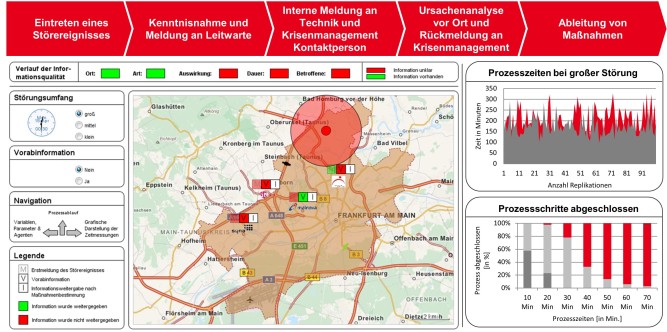Critical infrastructures (KRITIS), like the supply of energy and water or information and communication systems, are the sensitive nervous system of modern cities. As a result of close unilateral and mutual dependencies between KRITIS, cascading and amplifying effects of disturbance can arise (e. g. if the supply of water and the telecommunication are closed down due to a power failure). Therefore, the protection of KRITIS requires an urban-wide and cross-sectorial cooperation.
The research project addresses the requirements of the inter-organizational information exchange between the different KRITIS-operators and the civil protection. The object is to derive theses for the behavior of the individual actors, for communication problems and for possible actions concerning inter-organizational collaboration for the urban risk and crisis management.
Qualitative and quantitative methods complement each other in the interdisciplinary project between planning and economic sciences. The scientific study is carried out in a close collaboration with practice partners from Frankfurt am Main (e.g. Mainova AG, Telekom AG and the professional fire brigade). It comprises the following milestones:
- Analysis of vulnerabilities of possible cascades of disturbances regarding KRITIS in Frankfurt am Main (evaluation of literature and expert interviews)
- Modeling of communication processes using a cascading scenario of disturbance (agent-based simulation of the communication and spatial localization by means of GIS)
- Derivation of factors of inter-organizational information exchange and of information asymmetries (expert workshops with representatives of the involved organizations)
- Conclusions for the organization-spanning collaboration
Key Data:
Runtime: Januar bis Juli 2016
Sponsor: FiF – Förderinitiative interdisziplinäre Forschung
Partners:
- Fachgebiet Raum- und Infrastrukturplanung: Link
- Mainova AG
- Telekom AG
- Berufsfeuerwehr
- Modeling approach: Discrete-event and agent-based
- Performance criterion: Simulation of communication and information exchange processes





